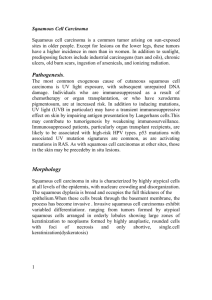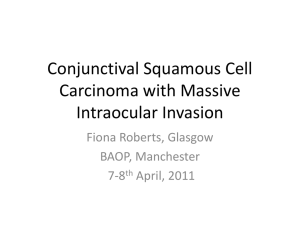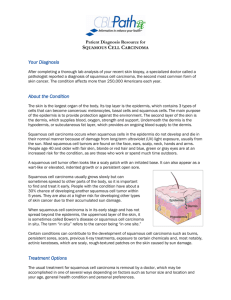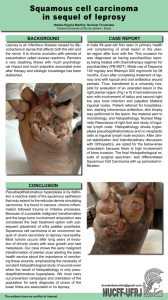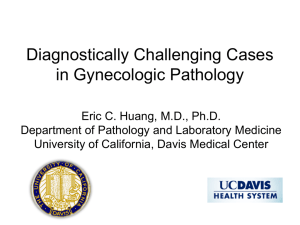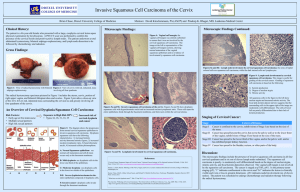solar dermatitis - Ark Veterinary Centre
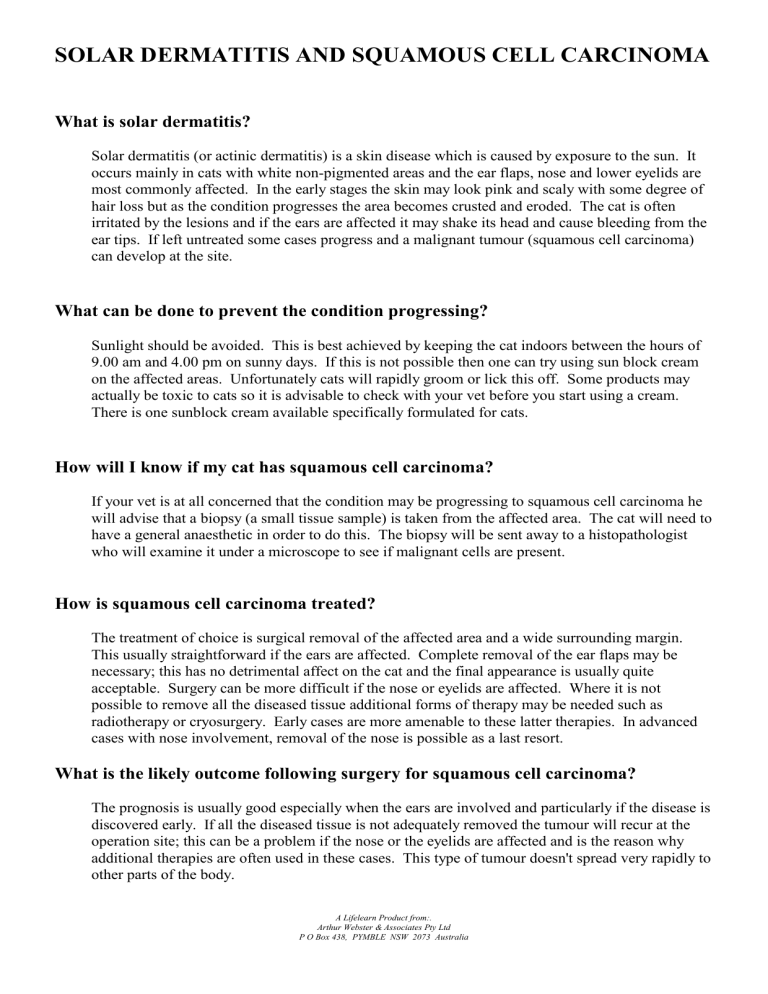
SOLAR DERMATITIS AND SQUAMOUS CELL CARCINOMA
What is solar dermatitis?
Solar dermatitis (or actinic dermatitis) is a skin disease which is caused by exposure to the sun. It occurs mainly in cats with white non-pigmented areas and the ear flaps, nose and lower eyelids are most commonly affected. In the early stages the skin may look pink and scaly with some degree of hair loss but as the condition progresses the area becomes crusted and eroded. The cat is often irritated by the lesions and if the ears are affected it may shake its head and cause bleeding from the ear tips. If left untreated some cases progress and a malignant tumour (squamous cell carcinoma) can develop at the site.
What can be done to prevent the condition progressing?
Sunlight should be avoided. This is best achieved by keeping the cat indoors between the hours of
9.00 am and 4.00 pm on sunny days. If this is not possible then one can try using sun block cream on the affected areas. Unfortunately cats will rapidly groom or lick this off. Some products may actually be toxic to cats so it is advisable to check with your vet before you start using a cream.
There is one sunblock cream available specifically formulated for cats.
How will I know if my cat has squamous cell carcinoma?
If your vet is at all concerned that the condition may be progressing to squamous cell carcinoma he will advise that a biopsy (a small tissue sample) is taken from the affected area. The cat will need to have a general anaesthetic in order to do this. The biopsy will be sent away to a histopathologist who will examine it under a microscope to see if malignant cells are present.
How is squamous cell carcinoma treated?
The treatment of choice is surgical removal of the affected area and a wide surrounding margin.
This usually straightforward if the ears are affected. Complete removal of the ear flaps may be necessary; this has no detrimental affect on the cat and the final appearance is usually quite acceptable. Surgery can be more difficult if the nose or eyelids are affected. Where it is not possible to remove all the diseased tissue additional forms of therapy may be needed such as radiotherapy or cryosurgery. Early cases are more amenable to these latter therapies. In advanced cases with nose involvement, removal of the nose is possible as a last resort.
What is the likely outcome following surgery for squamous cell carcinoma?
The prognosis is usually good especially when the ears are involved and particularly if the disease is discovered early. If all the diseased tissue is not adequately removed the tumour will recur at the operation site; this can be a problem if the nose or the eyelids are affected and is the reason why additional therapies are often used in these cases. This type of tumour doesn't spread very rapidly to other parts of the body.
A Lifelearn Product from:.
Arthur Webster & Associates Pty Ltd
P O Box 438, PYMBLE NSW 2073 Australia
Ark Veterinary Centre
A Lifelearn Product from:.
Arthur Webster & Associates Pty Ltd
P O Box 438, PYMBLE NSW 2073 Australia



